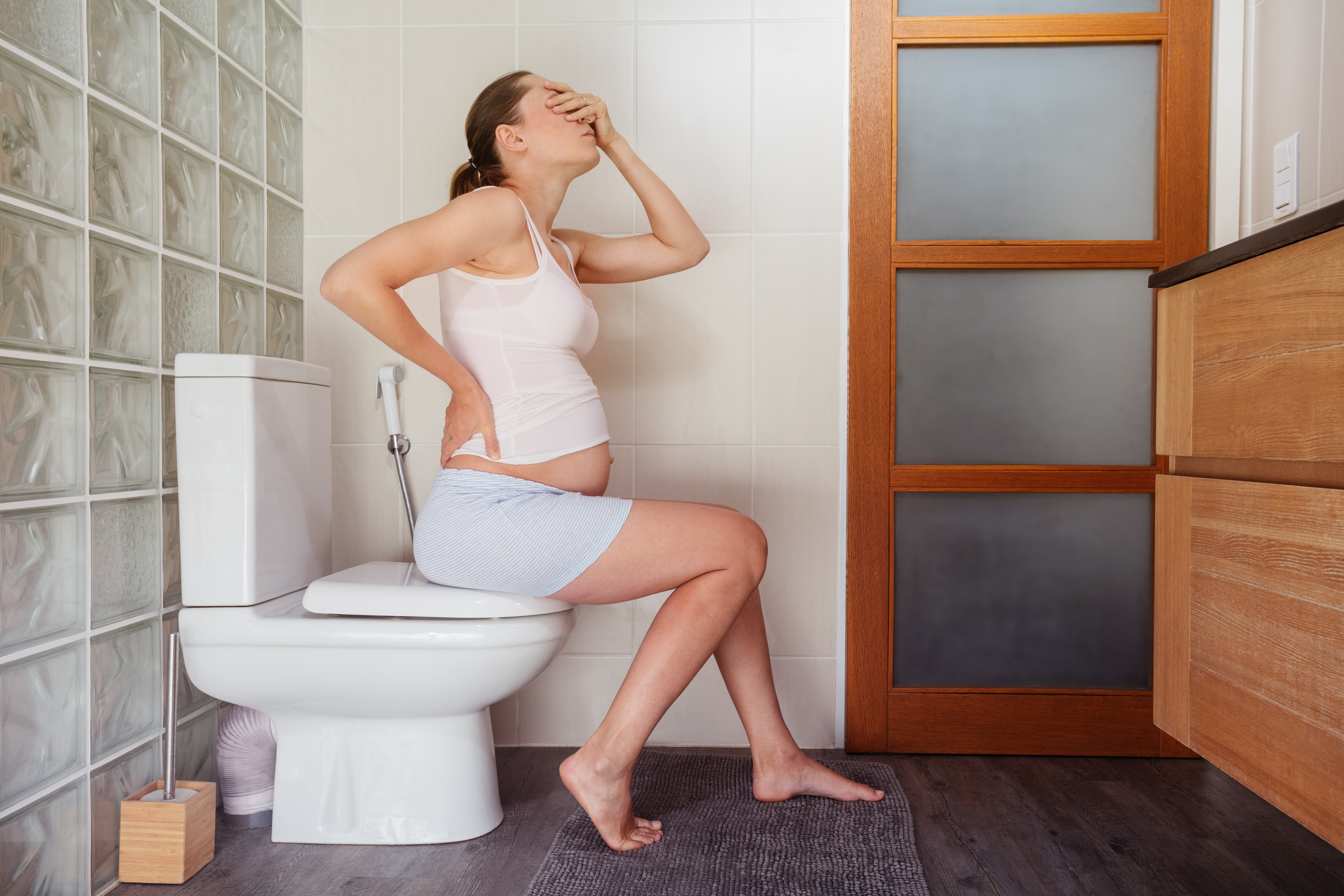If you suffer from endometriosis, you are likely aware that it may have negative implications for your fertility. You may have struggled to conceive for many years, and your struggles with infertility may have been what clued you in that endometriosis might be a concern!
An estimated 30 – 50% of women with endometriosis experience infertility [1]. Why is infertility a symptom for some women suffering from endometriosis, and not for others? Part of the reason has to do with the location of the endometrial lesions within your body. But location is not the only contributing factor.
According to the American Society for Reproductive Medicine (ASRM), “Endometriosis can influence fertility in several ways: distorted anatomy of the pelvis, adhesions, scarred fallopian tubes, inflammation of the pelvic structures, altered immune system functioning, changes in the hormonal environment of the eggs, impaired implantation of a pregnancy, and altered egg quality” [1]. In this article, we’ll explore what it is about endometriosis that may lead to infertility, and what you can do about it.
What contributes to infertility when you have endometriosis
- Scar Tissue
Scar tissue is a natural type of tissue that develops after an injury. Endometriosis lesions will often cause the formation of scar tissues. Endometriosis-related scar tissue may distort anatomy and alter normal bodily functions. For example, scar tissue in the fallopian tubes may create physical blockages, preventing successful implantation. Additionally, scar tissue due to endometriosis on the cervix, vagina, or nearby areas may make sexual intercourse painful.
2. Adhesions
Adhesion formation is one way the body can respond to injury or surgery. Adhesions bind together with scar tissue two structures which would not normally be connected. With endometriosis, adhesions may occur from the presence of endometriosis lesions or as a result of surgery. Having adhesions present in the reproductive system can make it difficult for the organs to function normally. For example, adhesions on the fallopian tubes may prevent them from performing the natural movement that enables them to pick-up the egg after ovulation.
One study reports, “Major pelvic adhesions or peritubal [surrounding the fallopian tube(s)] adhesions that disturb the tubo-ovarian liaison and tube patency can impair oocyte release from the ovary, inhibit ovum pickup, or impede ovum transport.”[2] For natural conception, ovulation must occur. An egg must make it into the fallopian tube to become fertilized. When adhesions create physical blockages, this becomes impossible.
3. Ovulatory Disorders
Women with endometriosis may have disorders that result in poor or delayed ovulation. Examples include luteinized unruptured follicle (LUF) syndrome, a luteal phase defect, or anovulation [3]. LUF is an ovulatory disorder in which the dominant follicle containing the egg luteinizes, which means it develops towards ovulation, but it never ruptures and the egg isn’t released [2]. One study reported that LUF is a major cause of infertility, occurring in 25-43% of women experiencing infertility [4]. A luteal phase defect is characterized by a short luteal phase, usually caused by low progesterone levels. The uterine lining (also known as the endometrium) may be unresponsive to progesterone, or the ovaries release insufficient amounts of progesterone. As a result, the uterine lining does not support normal implantation. Anovulation is a cycle where ovulation has not occurred, making natural pregnancy impossible. More on how to tell if you’ve had or are having anovulatory cycles is here.
4. Distorted anatomy
Adhesions, scar tissue, inflammation, and lesion location all contribute to distorted anatomy that makes fertilization and implantation unsuccessful. After ovulation, an egg leaves the ovary and must enter the fallopian tubes to meet sperm for fertilization. Despite how 2-D anatomical images portray the ovaries and fallopian tubes– they are not attached. This means the egg has some traveling to do! When anatomy is distorted, the egg may have trouble entering the fallopian tubes for fertilization because the position of the ovaries has changed.
5. Inflammation
Endometriosis is a chronic inflammatory disease which causes systemic inflammation. Inflammation leads to the production of natural biochemicals that can impair fertility in various ways. One study found, “women with endometriosis have an increased volume of peritoneal fluid with a high concentration of activated macrophages, prostaglandins, IL-1, TNF, and proteases. These alterations may have adverse effects on the function of the oocyte, sperm, embryo, or fallopian tube” [2].
These inflammatory fluids also contribute to increased cramping that could subsequently interfere with implantation. According to one theory, inflammation associated with endometriosis causes the uterus to contract and prevents normal implantation. Researchers reported that “abnormal uterine contractions may occur due to a cascade of biochemical products, including prostaglandins, released in the pelvic structures after irritation and inflammation. This theory may explain the failure of implantation in patients with endometriosis: abnormal uterine contractility may interfere with adhesion and subsequent penetration of the embryo on a predecidualized endometrium” [2].
6. Immune dysfunction
After ovulation, progesterone suppresses the immune system to prevent the body from attacking a newly implanted embryo. With endometriosis, the immune system may be overactive, leading to an inappropriate immune response. This study reports that “elevated levels of IgG and IgA antibodies (autoantibodies to endometrial antigens) and lymphocytes may be found in the endometrium of women with endometriosis. These abnormalities may alter endometrial receptivity and embryo implantation” [2]. In other words, the immune system may attack an embryo and/or prevent implantation from even occurring.
7. Lesion location
You probably received a score or stage when you were diagnosed with endometriosis. The oldest and most well-known staging system, last revised in 1996 by the American Society for Reproductive Medicine (ASRM), classifies endometriosis as stage I, II, III, or IV based on how many lesions are identified during surgery as well as how deep they go [5]. But critics point to many flaws with this system, including its failure to “describe deep endometriosis accurately,” its “poor correlation with fertility outcomes,” its “very poor correlation with pain symptoms and quality of life” [6]. Despite these limitations though, in general the more advanced the endometriosis is, the more likely the woman will struggle with infertility.
Lesions on the fallopian tubes or ovaries may be associated with higher infertility rates. Some endometriosis lesions may be present on the fallopian tubes, leading to inflammation, and may even grow to block the fallopian tubes. If lesions are on the ovary, such as an endometrioma, ovulation may be suppressed entirely.
8. Cervical mucus
Besides ovulation, cervical mucus is another necessary part of the natural conception equation. Cervical mucus makes the vaginal pH hospitable to sperm and facilitates sperm transportation through the vagina and cervix into the uterus. It also extends the life of sperm from minutes or hours to five days. It’s pretty important!
Unfortunately, many women with endometriosis lack quality fertile cervical mucus. According to Dr. Patrick Yeung, director of the Center for Endometriosis at Saint Louis University’s School of Medicine, “women with endometriosis can have irregular bleeding or abnormal bleeding (bleeding outside of menses) for cysts of endometriosis called endometriomas, luteal phase defects such as long luteal phase or short post-peak phase, and low mucus scores (this is specific to the Creighton system of FABM)” [7]. Focusing on improving cervical mucus production may prove beneficial!
Chart your cycle
You are probably thinking, “what in the world can I do now?” As scary as infertility can be, most of these things discussed above are treatable! Cycle charting can be extremely helpful in identifying hormonal imbalances, ovulatory dysfunction, and other root causes of infertility often seen with endometriosis. For even more benefit, chart your cycle using the FEMM, Creighton Model, or ChartNeo methods which pair fertility awareness charting with medical management. These methods allow you to see a doctor who is experienced in interpreting cycle charts and can identify your specific root cause of infertility. Cycle charting can bring clarity to the situation, offer support through your instructor, and give you superb guidance through medical management.
Try an anti-inflammatory diet
You may have read about following a gluten-free and/or dairy-free diet to decrease endometriosis symptoms, especially pelvic pain. As the thinking goes, both gluten intake and dairy intake could potentially lead to increased inflammation in the body. Since endometriosis is characterized by inflammation, decreasing pro-inflammatory food source intake might lead to symptom relief. Adding in anti-inflammatory foods like fruits (especially berries), fatty fish, veggies, nuts, and seeds may also help decrease endometriosis-related pain.
Little research has been done on this topic, but what exists is promising. A 2012 study of 207 women found that 75% reported a significant reduction in painful periods, painful sex, and pelvic pain symptoms after 12 months of following a gluten-free diet. 25% reported no improvement in symptoms, and none of the enrollees reported worsening symptoms.
Additionally, a 2017 study of 160 women with endometriosis and irritable bowel syndrome symptoms found that 72% experienced bowel symptom relief of 50% or more after just 4 weeks of following a low-FODMAP (fermentable oligosaccharides, disaccharides, monosaccharides, and polyols) diet.
This 2020 qualitative interview study of 12 women who experienced improved mental health and decreased pain after making dietary changes may also be of interest if you struggle with endometriosis symptoms.
Oftentimes, surgery can help
In addition to cycle charting as a starting point for addressing some of factors listed above, research suggests that fertility rates tend to improve after successful excision of endometriosis lesions.
In one study of 120 women with endometriosis, 79 (65.8%) became pregnant naturally after excision surgery [11]. This study reported that, “complete removal of the endometriosis lesions may increase the chance of future pregnancy.” Considering the many ways in which endometriosis can contribute to infertility, this makes sense.
More specifics on what makes endometriosis surgery more likely to be successful are here.
Navigating infertility and endometriosis can be challenging, isolating, and confusing, but there is hope and you do have options!
References:
[1] ASRM. “Endometriosis: Does It Cause Infertility?” www.reproductivefacts.org. Published 2016. https://www.reproductivefacts.org/news-and-publications/patient-fact-sheets-and-booklets/documents/fact-sheets-and-info-booklets/endometriosis-does-it-cause-infertility/#:~:text=Endometriosis%20can%20influence%20fertility%20in [2] Bulletti C, Coccia ME, Battistoni S, Borini A. “Endometriosis and infertility.” Journal of Assisted Reproduction and Genetics. 2010;27(8):441-447. doi:10.1007/s10815-010 -9436-1 [3] Galle PC. “Clinical Presentation and Diagnosis of Endometriosis.” Obstetrics and Gynecology Clinics of North America. 1989;16(1):29-42. doi:10.1016/s0889-8545(21) 00136-4 [4] Wang L, Qiao J, Liu P, Lian Y. “Effect of luteinized unruptured follicle cycles on clinical outcomes of frozen thawed embryo transfer in Chinese women.” Journal of Assisted Reproduction and Genetics. 2008;25(6):229-233. doi:10.1007/s10815-008-9225-2 [5] Johnson, NP, Hummelshoj L, Adamson GD et al. World Endometriosis Society Sao Paulo Consortium, “World Endometriosis Society consensus on the classification of endometriosis.” Human Reproduction, vol. 32, iss. 2 (2017): pp. 315-24. https://doi.org/10.1093/humrep/dew293 [6] “Revised American Society for Reproductive Medicine classification of endometriosis: 1996.” Fertility and sterility, vol. 67, no. 5 (1997): pp. 817-21. doi:10.1016/s0015-0282(97)81391-x [7] Facts about Fertility. Charting with Endometriosis – An Interview with Dr. Yeung. FACTS. Published March 24, 2017. https://www.factsaboutfertility.org/endo-dr-yeung/ [8] Marziali, M et al. “Gluten-free diet: a new strategy for management of painful endometriosis related symptoms?.” Minerva chirurgica vol. 67,6 (2012): pp. 499-504. [9] Moore, J et al. “Endometriosis in patients with irritable bowel syndrome: Specific symptomatic and demographic profile, and response to the low FODMAP diet.” ANZJOG, vol. 57, no. 2 (2017): pp. 201-05. https://doi.org/10.1111/ajo.12594 [10] Vennberg Karlsson J, Patel H, Premberg A. Experiences of health after dietary changes in endometriosis: a qualitative interview study. BMJ Open, vol. 10, no. 2 (2020):e032321. doi: 10.1136/bmjopen-2019-032321. PMID: 32102806; PMCID: PMC7044830. [11] Schippert C, Witte Y, Bartels J, et al. Reproductive capacity and recurrence of disease after surgery for moderate and severe endometriosis – a retrospective single center analysis. BMC Women’s Health. Vol. 20, no. 1 (2020). doi:10.1186/s12905-020-01016-3Additional Reading:
How to get an endometriosis diagnosis and find truly restorative treatment
“Is infertility treatable?” and other questions: A Natural Womanhood Infertility FAQ
The difficulties of diagnosing and categorizing the stages of endometriosis
Considering endometriosis surgery? Here’s how to find a good endo surgeon







